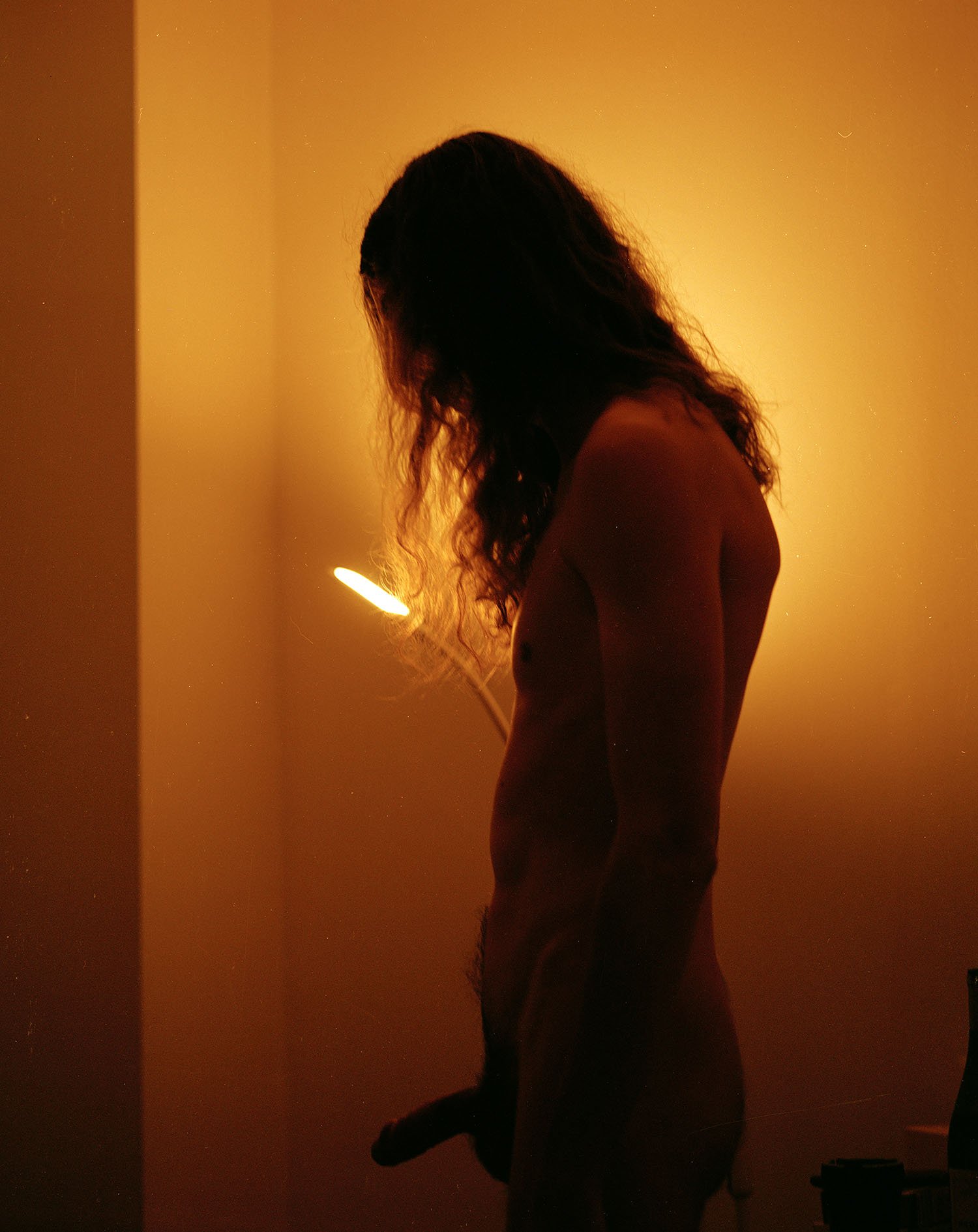The Boys
Bingnan Liu explores the female gaze of a photographer working with male models, the shift in power dynamics, and the possibility of rebuilding the prevailing narrative predominantly owned by male. The proposition is to create a shift in (in)balance in patriarchal society towards a more inclusive approach, which allows the male figures to examine the range between femininity and masculinity, working on a presentation of intimacy and openness of the subjects to the piercing stare behind the camera. For Bingnan, this shift is not only connected to correcting the current situation but also has to do with a personal healing process, the yearning for power correction, and a new construct of masculinity.
According to Bingnan, “I feel a change in my mindset, complex and subtle; from the careful beginnings of trying to create a more egalitarian and gentle perspective to the now almost unabashed, yearning for more power.” The desire to become closer to the person photographed, to allow them to be more authentic and vulnerable, leads to a revelation of inner beauty. With the series Boys, which began in 2020, Bingnan creates portraits that represent duality stemming from the ambiguous relationship to the male figure, the firm decision to shift power, and the soft attraction to the subjects.
Bingnan Liu is a queer Asian artist and photographer based in Paris who graduated from Ecole nationale supérieure d'arts de Paris Cergy.
‘I feel a change in my mindset, complex and subtle; from the careful beginnings of trying to create a more egalitarian and gentle perspective to the now almost unabashed, yearning for more power.’
Hi Bingnan, as a graduate of Ecole nationale supérieure d'arts de Paris Cergy, what are the main changes in your approach to photographing subjects and developing themes?
My shooting theme has remained the same. I just wanted to shoot men and the intimate moments because there are few similar themes, especially women photographers researching this topic. But as my work continues to grow, I feel a change in my mindset, complex and subtle; from the careful beginnings of trying to create a more egalitarian and gentle perspective to the now almost unabashed, yearning for more power. It's not simply a gender shift but more of a desire to grab more power from a female instinct.
‘I use photography to find the men I want, to construct the masculinity I like.’
You started the currently ongoing project, The Boys, back in 2020, and as you depict it, the project became part of the self-healing process for you. Creating a different gaze of a queer Asian woman portraying men is the central theme for this work and your practice. Could you speak more about the healing through the camera and how it affects you?
Actually, photography, for me, is a way to communicate, connect, and get close to people. Healing is more of a process because since I was a child, I didn't like men around me, I didn't like the masculinity they exuded, and I was tired of the patriarchal society's double-gender regulation for men and women and the gender privilege men have. So, I use photography to find the men I want, to construct the masculinity I like. If the men I photograph are somehow my favorite and are handsome, the process is, naturally, a healing one.
‘The process itself wasn't exactly smooth sailing. It was feeling, breaking, creating, healing myself, and becoming stronger all at the same time.’
Camera in photography can be viewed as an additional tool of control. By controlling the subjects in the frame, one can shape the angle and the story through which the narrative unfolds. What did you learn from working on this project and meeting different people who became part of the story you created?
I think the influence is mutual, in fact, each subject is a short story. There are my friends, men who cheated, men who tried to cheat, scumbags, people I had crushes on. The process itself wasn't exactly smooth sailing. It was feeling, breaking, creating, healing myself, and becoming stronger all at the same time.
‘With some men, I use his curiosity about me, his lust, and the fantasies he has in his head about certain erotic, sensual scenarios to create something.’
The men in the series appear vulnerable and authentic, opening up to the camera with their true self, almost not caring about the viewer. What is the process you developed to work on set, connecting or directing the subjects to open up in this manner?
Different people have different ways of revealing themselves in front of the camera. With some men, I use his curiosity about me, his lust, and the fantasies he has in his head about certain erotic, sensual scenarios to create something.
Some men, we're friends.
Some men, we've had a little fling.
But the principle of all the shooting must be real and natural, that's the most touching thing.











